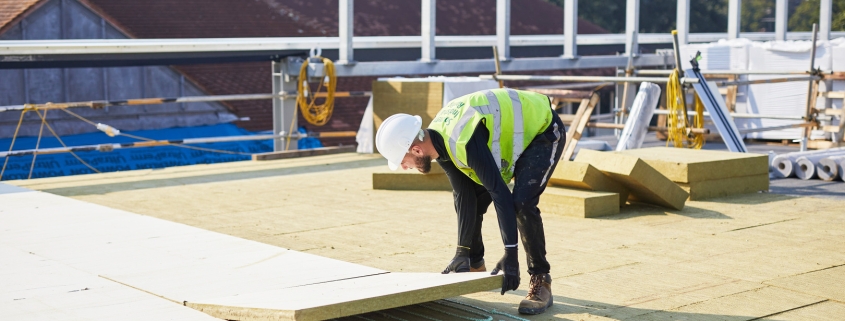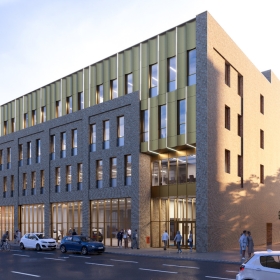Increasing the fire safety of flat roofs
Lisa Stephens, Product Manager for the Building Envelope at ROCKWOOL® UK, explains the fire performance considerations for multifunctional roofs.
Flat roofs commonly house not just plant and HVAC equipment but energy efficiency infrastructure, social spaces, and much more. Increasingly, schools for example, and especially in crowded urban areas, are adding rooftop school gardens or playgrounds to maximise outdoor spaces within the footprint they have available.
Safely use as a social space
As the use of flat roofs evolve, and potential sources of ignition increase, consideration towards the way in which flat roof materials react to fire becomes increasingly more important.
While there is no legislative requirement for non-combustible materials (apart from where the roof passes over a compartment wall), specifiers should be conscious of escape requirements where the roof is occupied. Where a roof provides a ‘means of escape’ is one of two examples provided in Approved Document B (ADB) for where a roof should be considered to perform the function of a floor.
ADB provides guidance through minimum periods of fire resistance in Tables B3 and B4 for structural building elements including floors. Fire resistance is measured in REI, a designation that identifies the performance of a building element in terms of its load bearing Structure (R), Integrity (E) and Insulation (I). This is significant for designers working around social spaces where escape routes must be considered and they may find themselves needing to make a judgement on whether a roof requires a period of fire resistance.
Practical applications
While utilising a roof space for practical purposes is more of a well-established concept, complex considerations still apply. Statutory guidance for flat roof fire safety, including ADB, sets out key provisions for some of the practical applications, indicating routes to compliance for the building regulations. These include plant rooms, rooflights and junctions with compartment walls.
There is also guidance in BS 8579:2020 ‘Guide to the design of balconies and terraces’, which discusses the fire performance required by balconies and terraces, and references plant equipment and compartmentation.
However, across these documents there is no specific guidance for the use of solar panels on flat roofs – a practical use that is increasingly common as specifiers incorporate the solution to address energy efficiency and sustainability benefits.
Research and real-world evidence point to solar solutions introducing additional fire risk to flat roofs. There are known incidences of solar panel ‘arcing’ in which electrical energy passes through air gaps and can cause ignition of nearby materials, or the solar panel itself, due to the high temperatures involved (described as “easily hot enough to melt glass, copper and aluminium, and to initiate the combustion of surrounding materials”1).
The government guidance document “Power to the pupils” Solar PV for schools – The benefits2, gives recommendations on maximising the benefits of solar PV installations on schools. The list includes advice on maximising the educational benefits, choosing suppliers and site safety but stops short of including the potential impact on fire safety.
More recent guidance from the insurance industry e.g. the Fire Protection Association (FPA) RISCAuthority Need to know Guide RE3: Rooftop-mounted PV Solar Systems3 recommends that a suitable fire risk assessment should be carried out and to ensure roofing materials are non-combustible or, if installation on a combustible/partly combustible roof is unavoidable, a fire resistant covering be applied.
Simplifying flat roof specification
In England, ADB provides guidance on how designers can meet building regulation requirements for fire safety – but there are multiple routes to compliance, and different ways to demonstrate an appropriate level of fire protection.
Supplements including BS 8579:2020 cover the requirements for specific applications – in this case balconies and terraces. For schools, specialist guidance such as BB100 (Fire safety design for schools), can also influence decision-making.
Against a complex legislative backdrop, one simple way to mitigate risk is to select non-combustible materials throughout the fifth façade. The trend towards increasingly multifunctional roofs only strengthens this case.
ROCKWOOL recently launched the new whitepaper ‘Flat roofs: The functional fifth façade’ will help those involved in the design and installation of flat roofs to make responsible choices when selecting materials to enable a modern flat roof to be multifunctional, safe and long-lasting. It offers practical advice to simplify specification whilst going above and beyond legislative requirements.
For more information and to download the whitepaper go to: rockwool.link/ffpr-sb




Leave a Reply
Want to join the discussion?Feel free to contribute!